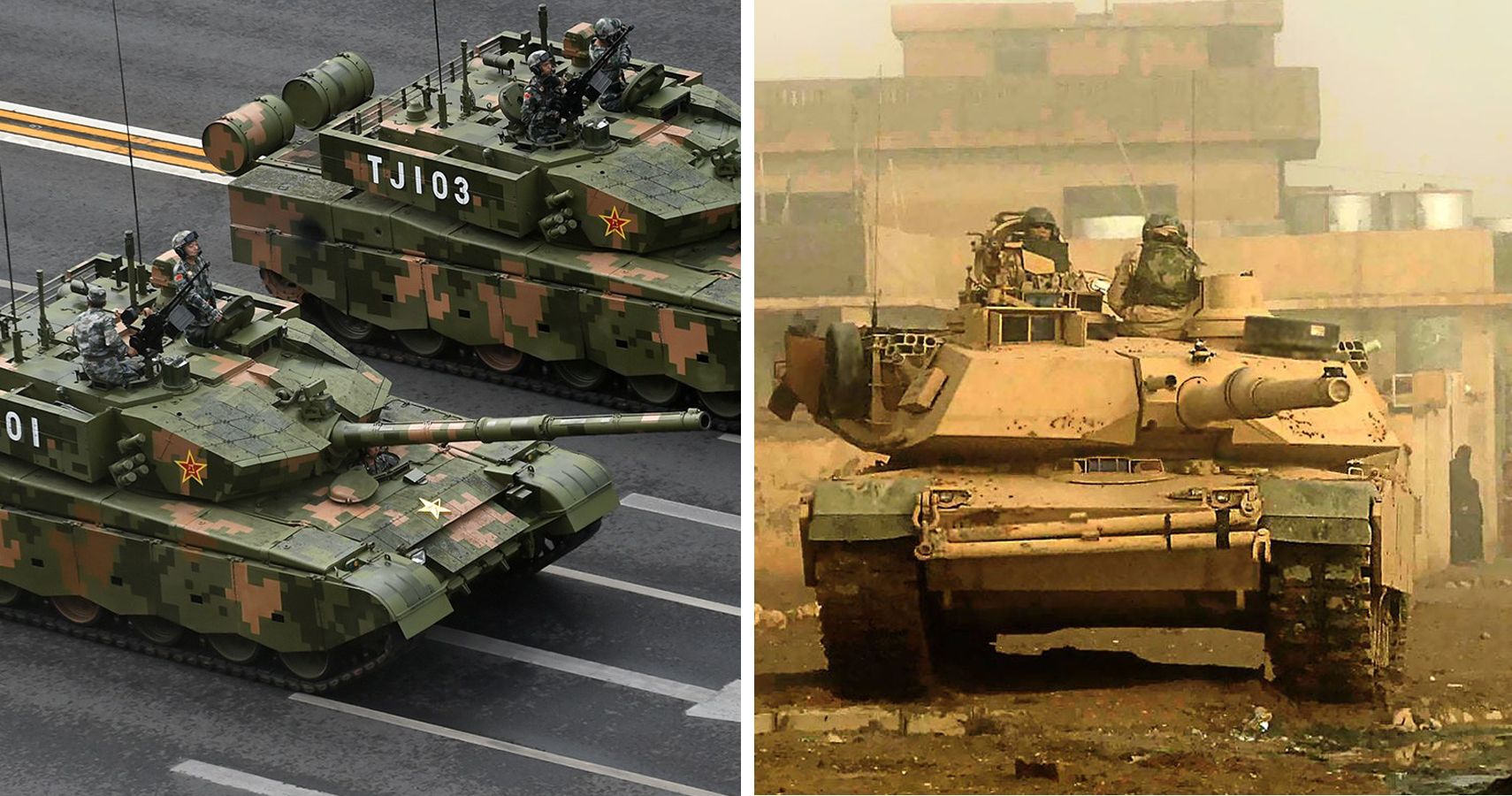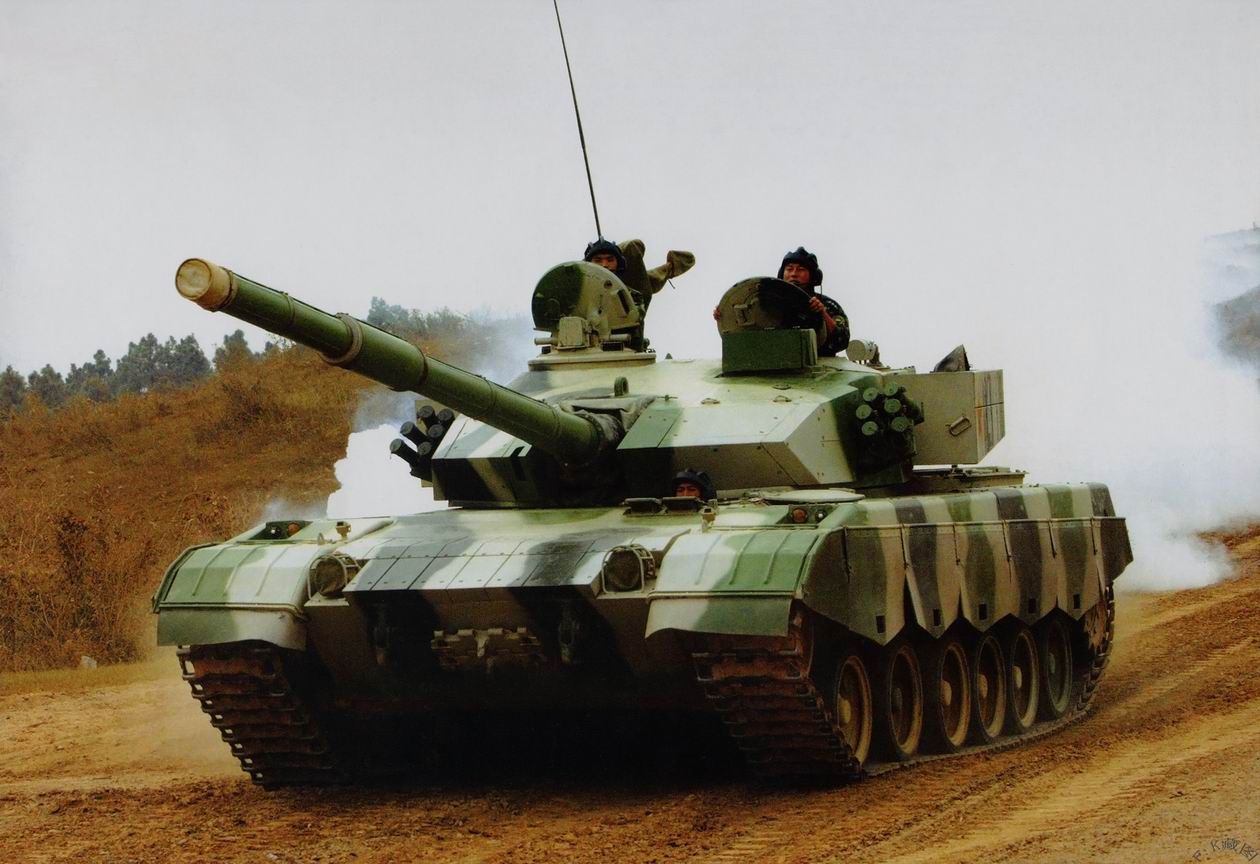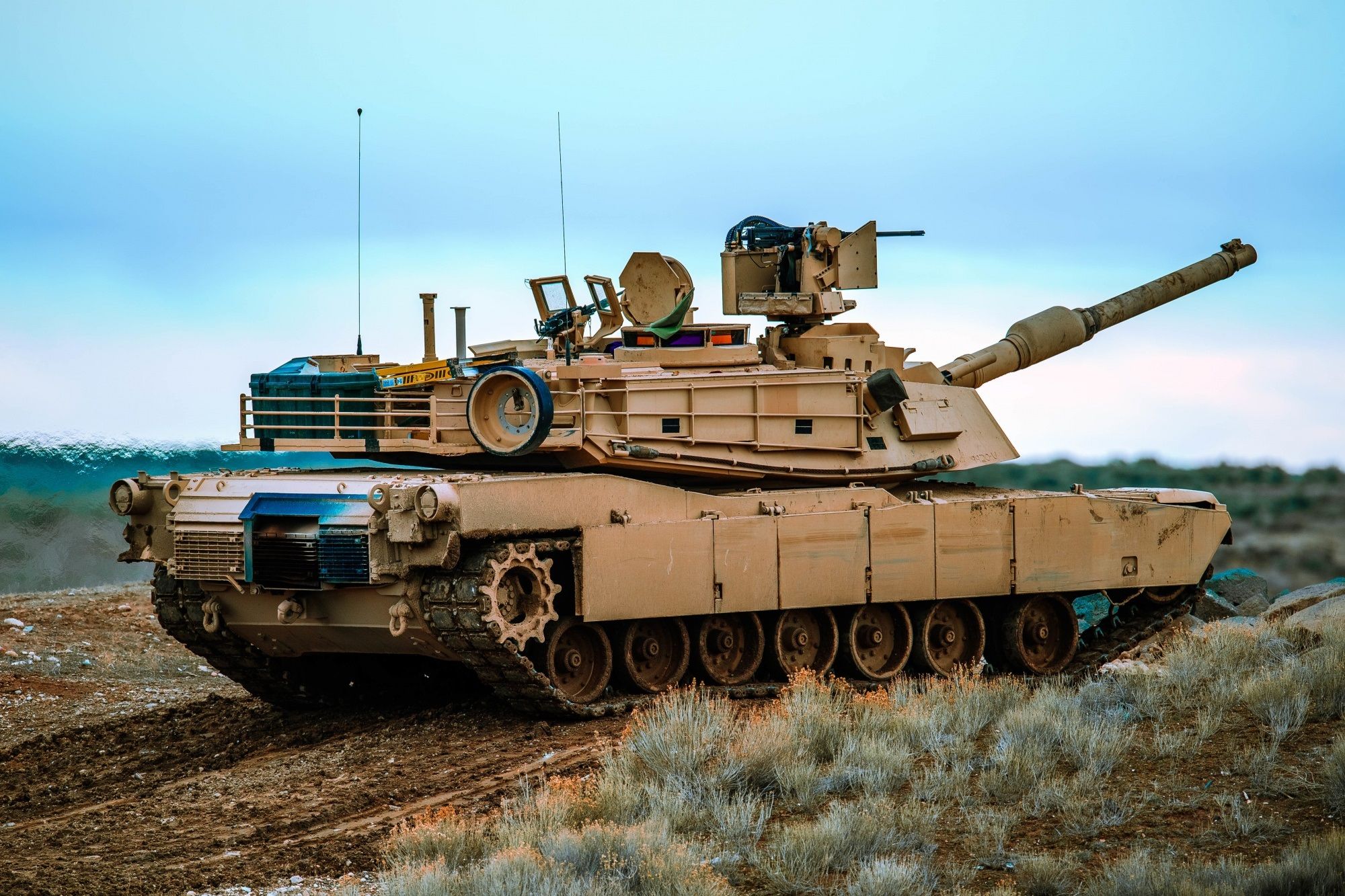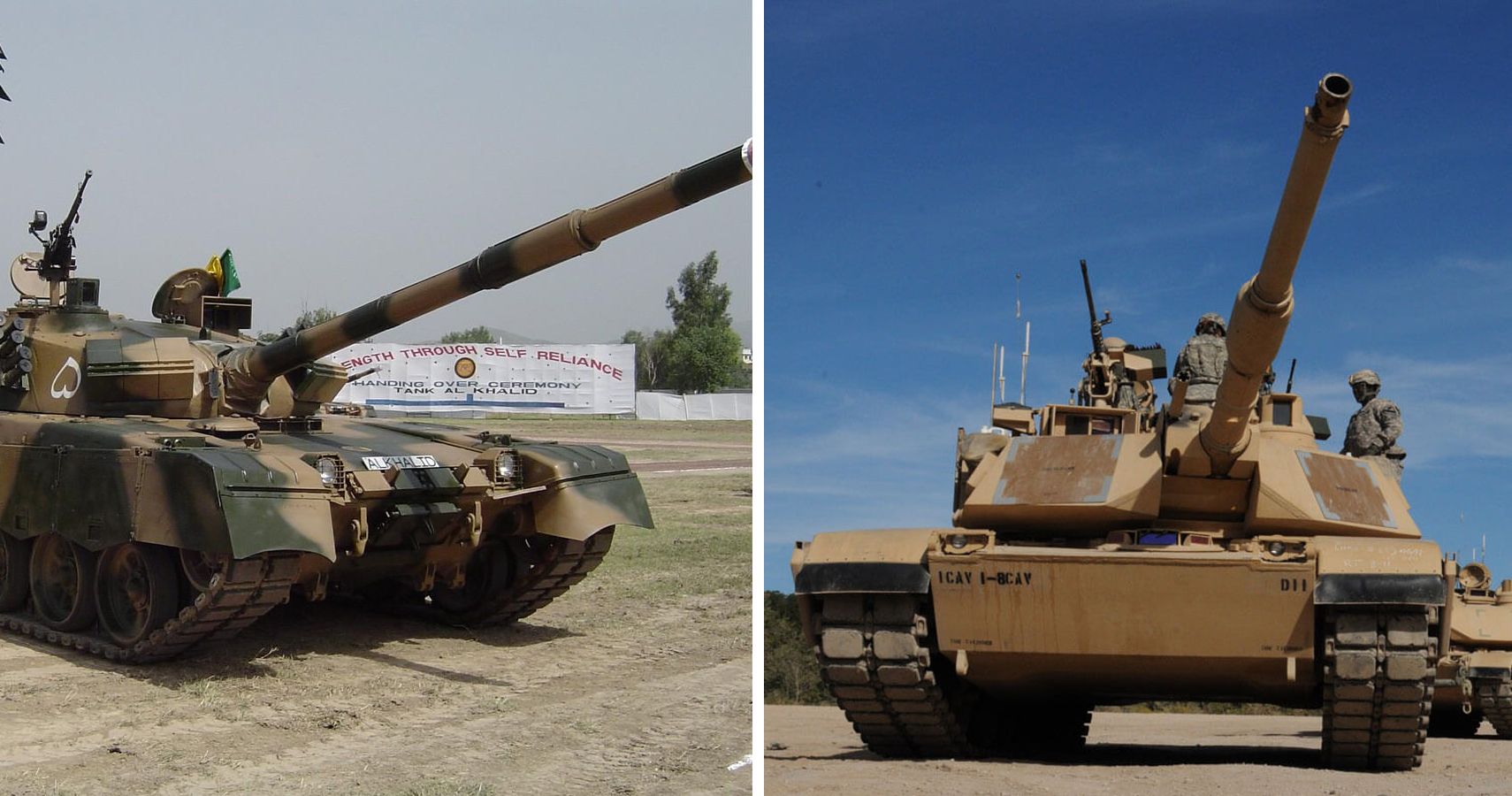China has at least 8,000 tanks in its war inventory, although most of them are antiquated clunkers. But the Chinese government has been crowing over the superiority of its Type 99 and modified Type 99A fighter vehicles—neither of which has experienced combat—particularly against the American-made M1 Abrams.
But the M1, produced in 1980 has been battled-tested several times, including the 1991 Gulf War, in which the vehicle pulverized Iraqi ground forces. Still, M1 proponents have a healthy respect for China's latest rollouts. So, how do these formidable fighting machines stack up against each other?
How The Type 99 Rates
While both the diesel-fueled T99 and the multi-gas turbine M1 sport 1,500 hp engines, the T99 is faster. It clocks in at 60 mph, leaving its U.S. opponent in the dust, with the M1 chugging along at 42 mph. Much of that is due to the T99 being much lighter, weighing in at around 57 tons, compared to the M1's hefty 72 tons.
Despite being lighter, the T99 is about four feet longer than the Abrams (with height and width roughly similar between the two tanks). It also has a much larger cannon, measuring at 125 mm that is reportedly capable of firing depleted-uranium rounds that can destroy an M1 nearly a mile away.
And because the cannon comes complete with an automatic loader, the tank only needs three personnel to run the tank, compared to the M1 which requires four. The T99 also has a gun tube to fire anti-tank missiles, a feature not included on the Abrams.
How the M1 Abrams Rates
The biggest advantage of the M1 is its firepower, with ammunition that's capable of causing more damage than the Type 99. Fired from its 120-mm cannon the tank's uranium-depleted rounds reportedly can pierce at least 25 percent more armor than any of its counterparts.
RELATED: U.S. Army Steps Into 21st Century With New Unmanned Tanks
And despite having a smaller cannon, M1 tank personnel claim a greater efficiency in delivering the ballistics, courtesy of a fourth person on board who can arm the cannon faster than an automatic loader which could break down in combat. Additionally, the ammunition is stored in a separate interior compartment, mitigating the chances of an explosion if the M1 is hit.
The M1's Chobham composite armor is reported among the best protection that a tank can receive and while the T99 claims to have a stronger exterior, the effectiveness of its armor is classified. Additionally, the M1 lacks a number of the T99's bells and whistles, such as the anti-tank missile. Designers state that most of them were not used in combat on previous tanks and haven't been included in more recent rollouts. As for laser-warning devices, those may be added in future upgrades.
And The Verdict?
The T99 has a significant advantage in speed, a boon when it comes to outmaneuvering the M1. It has an additional tactic in being able to eliminate an M1 from longer distances. While the jury is out on armor strength, its high-tech defense laser makes the M1 a much tougher target to hit.
But if the conflict is up close, the advantage clearly goes to the M1 which can get more rounds off than its opposition and leave behind a much bigger mark when all is said and done. It also has credibility courtesy of several wartime successes in its favor. Meanwhile, the T99's status as an untested fighting machine still makes its real-world formidability rather questionable.
Sources: Armed Forces EU, Asia Times, National Interest




